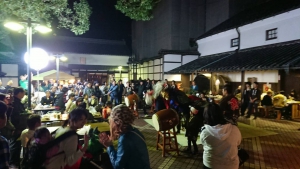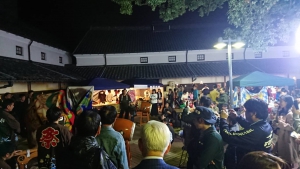Koubaitei | Yumoto Konpira Onsen Hananoyu in Kotohira | Smartphone site
News
2018/10/28 Blogs
The lion dance at Kinryo No Sato

The lion dance is known as shishi-mai in Japanese. It is thought to have been imported from China during the Tang Dynasty and became associated with the celebration of Buddha's Birthday. The first lion dance recorded in Japan was at the inauguration ceremonies of Tōdai-Ji in Nara in 752. The oldest surviving lion mask, made of paulownia wood with an articulated lower jaw, is also preserved in Tōdai-Ji. The dance is commonly performed during the New Year to bring good luck and drive away evil spirits, and the lion dancers may be accompanied by flute and drum musicians. It is also performed at other festivals and celebrations. In some of these performances, the lions may bite people on the head to bring good luck.
Lion dance performance
Date:
Time:
Round 1 : 19:15
Round 2 : 20:15
Place:
YUMOTO KONPIRA ONSEN HANANOYU KOUBAITEI
E-mail:koubai.reserve@hananoyu.co.jp
URL:http://www.koubaitei.jp/en/


